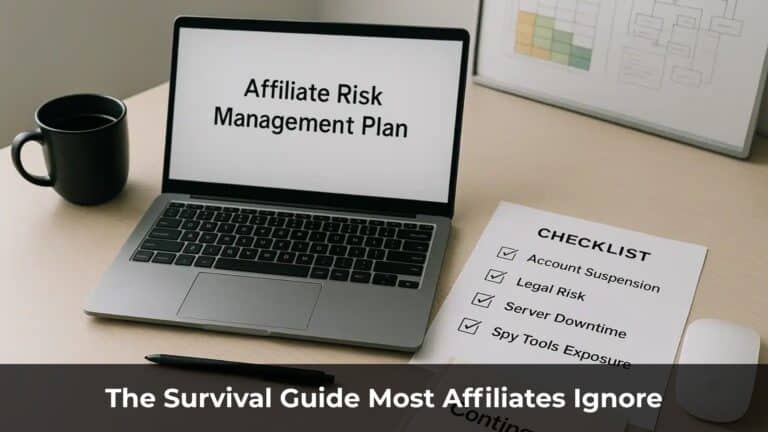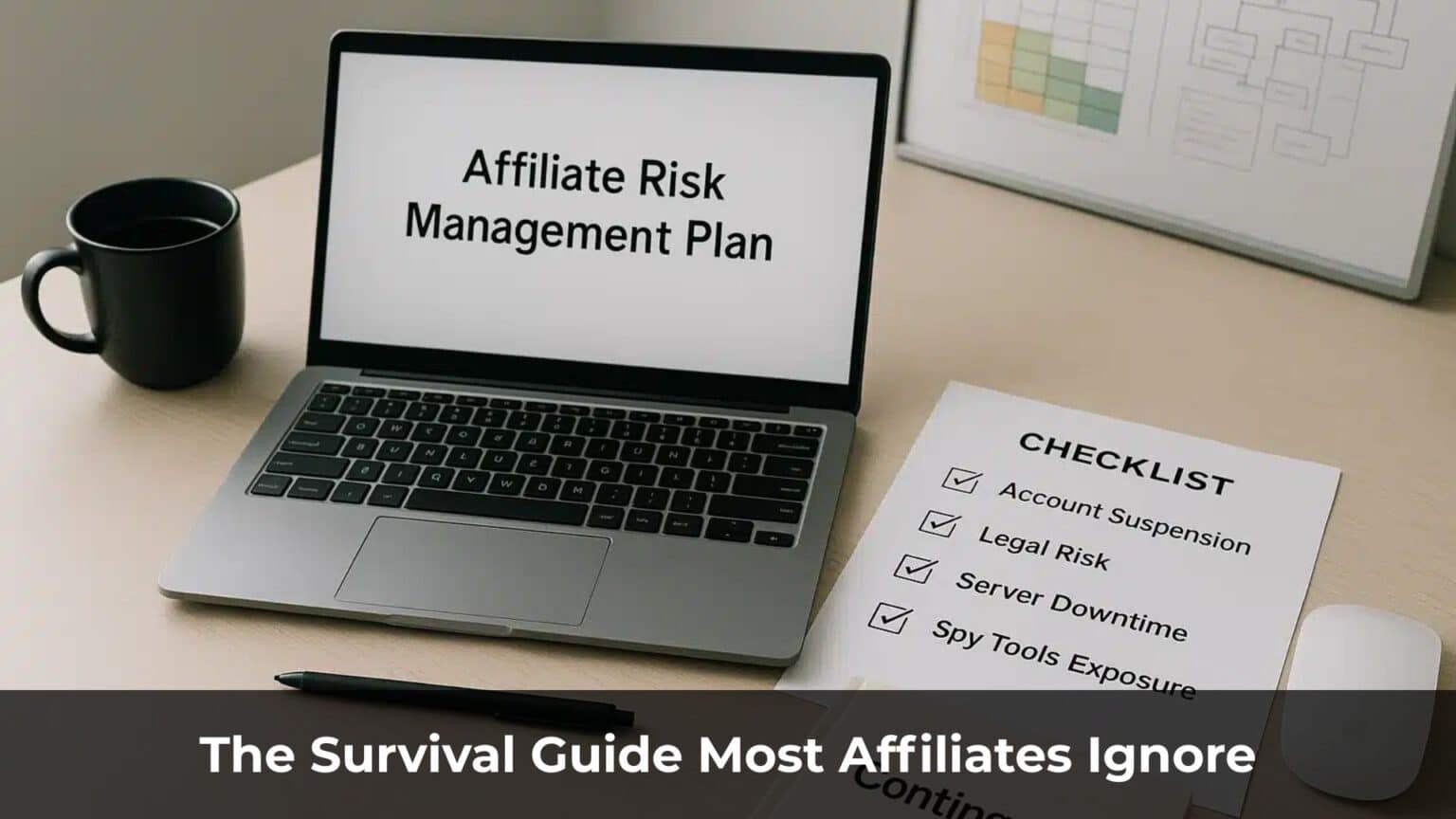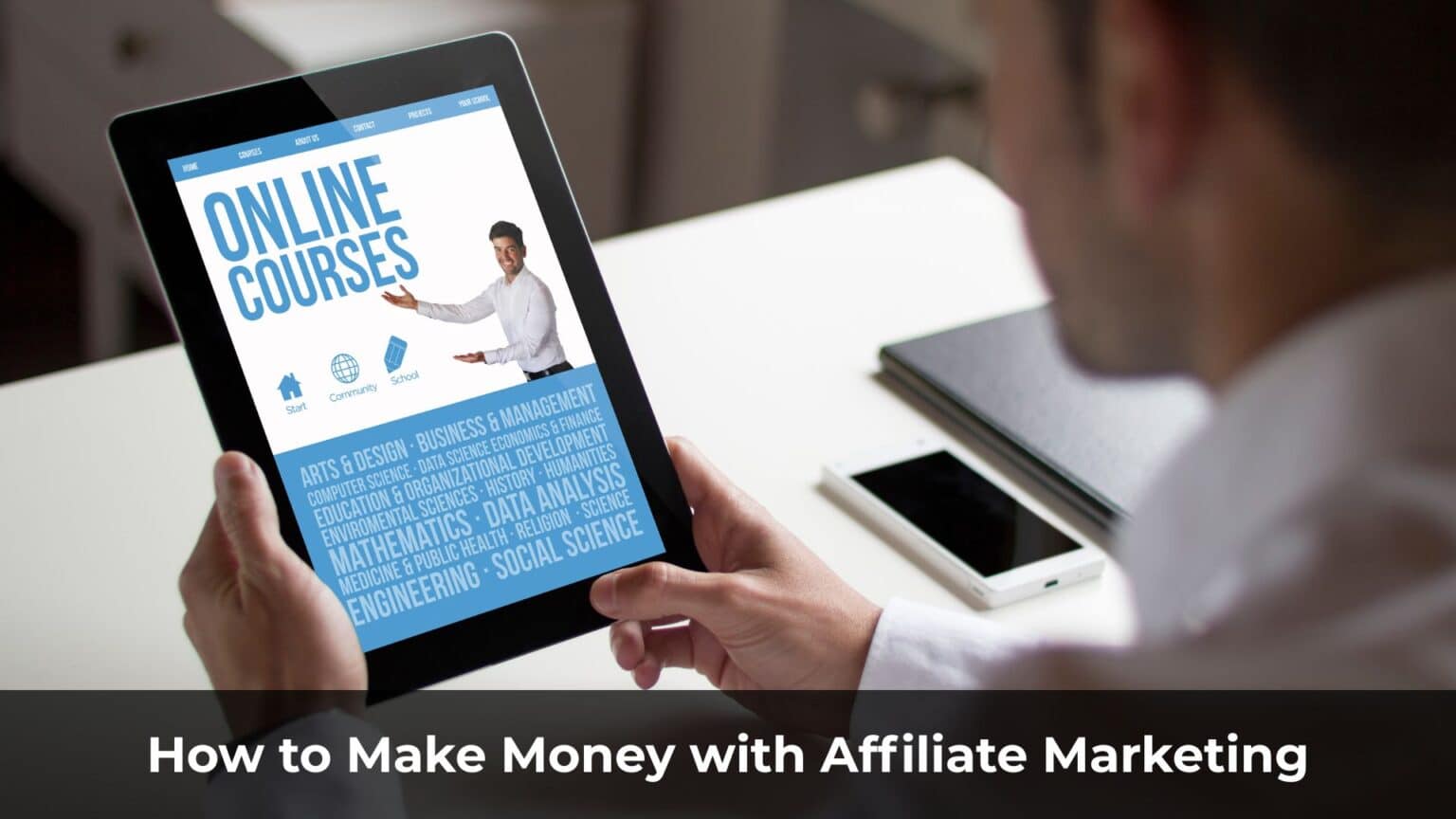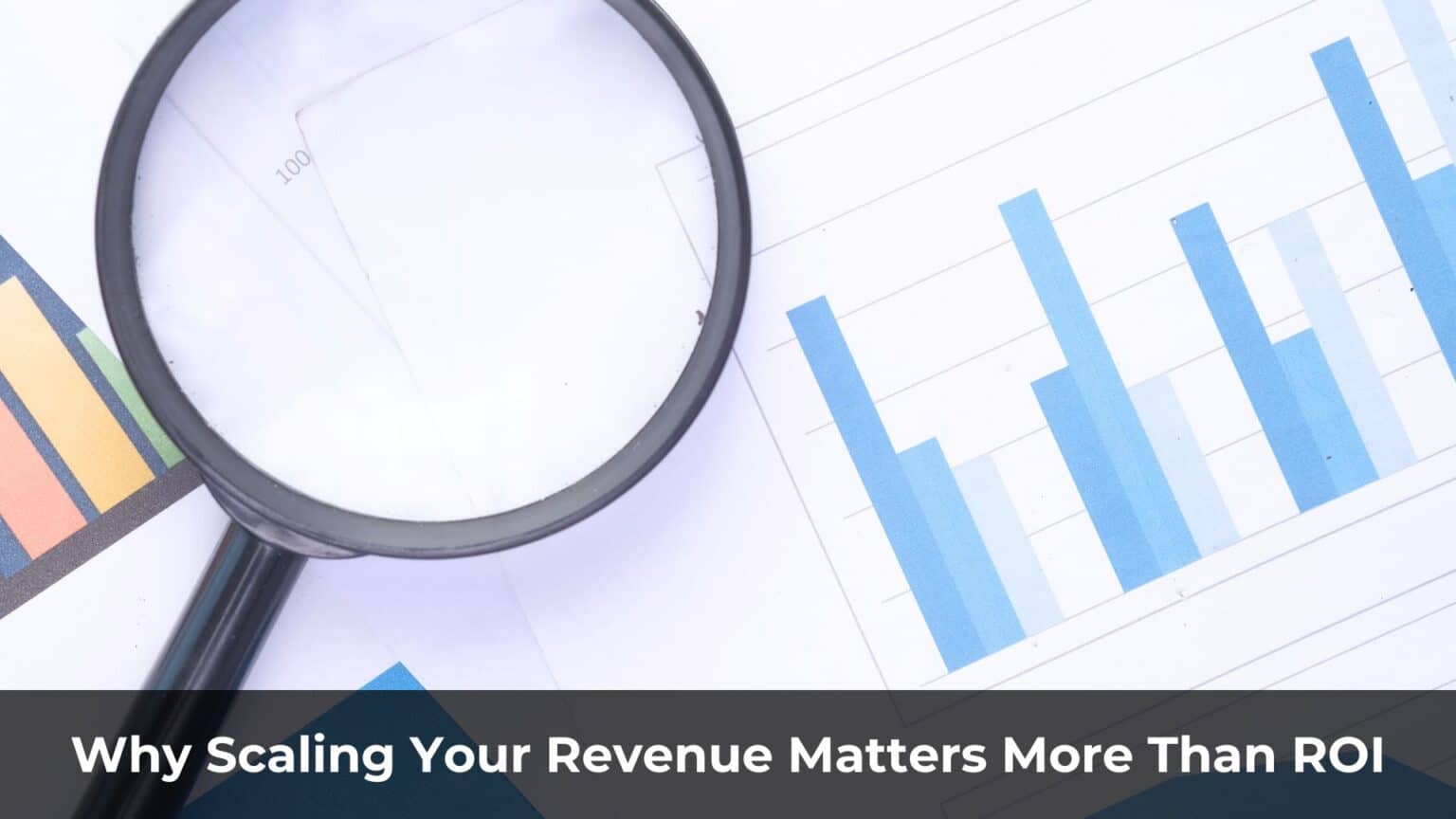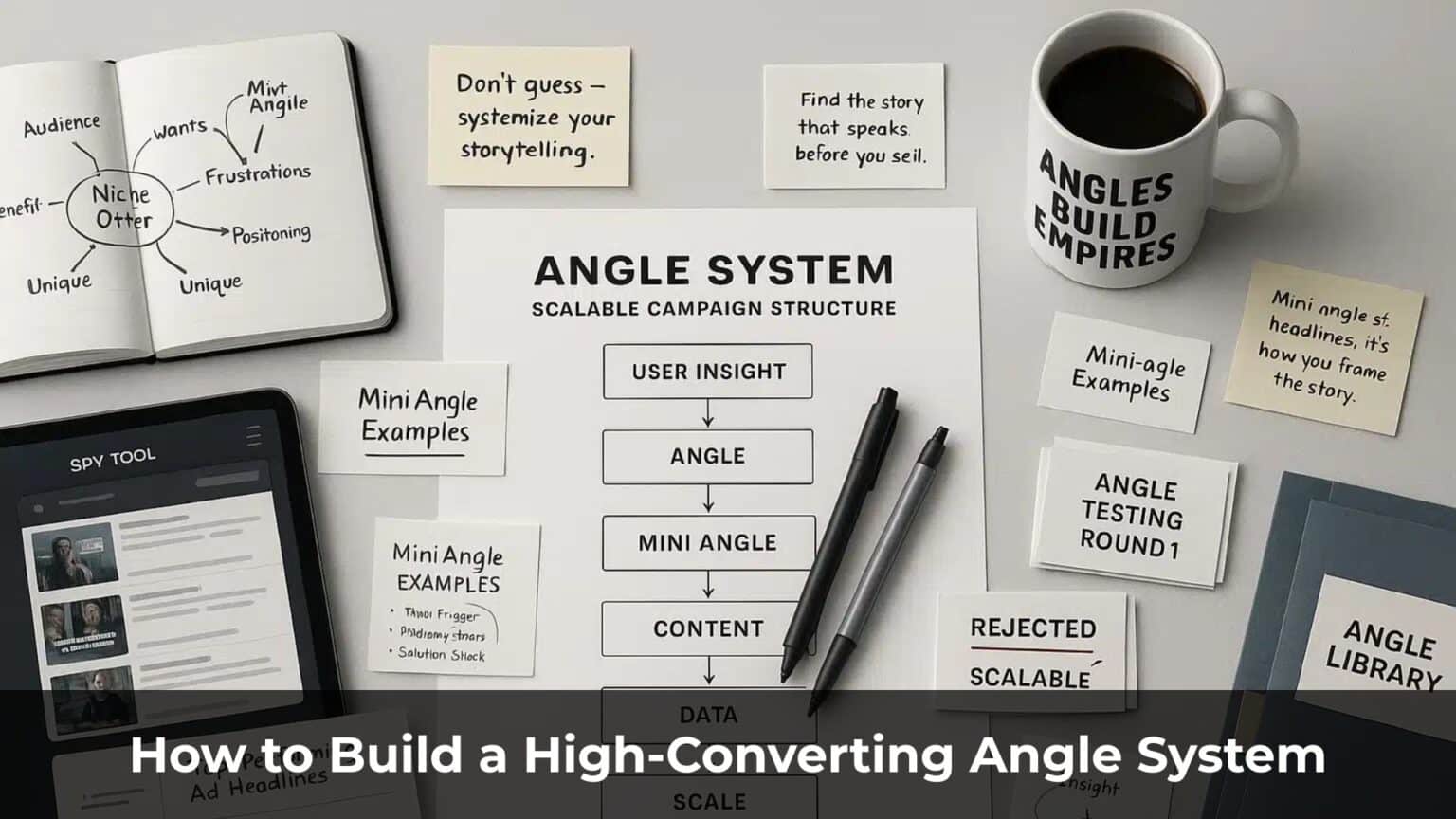I’ve written plenty of guides to help beginners launch their first profitable affiliate campaigns.
But here’s the question that doesn’t get asked enough:
Once you’re making money, what should you do next?
Where should that money go?
Should you scale up or stay steady?
Every new level of success brings its own challenges.
An affiliate making $500 a day faces a completely different set of problems than someone who just got their first sale. And just because you earned $500 yesterday doesn’t mean you’ll earn it again today.
I’ve seen affiliates go back to 9-to-5 jobs within a year — not because they couldn’t make money, but because they couldn’t adapt.
Making money is one thing. Keeping it is another.
After years in affiliate marketing, I’ve learned a few key lessons that can help you go further — not just in a single campaign, but in the long game of this business.
Table of Contents
ToggleStay Quiet About Your Wins — Preserve Your Momentum
Here’s something I always tell affiliates:
Don’t rush to share your success.
Especially when you’ve just started to see profit.
Early wins can be dangerously distracting.
You start thinking you’re “better than most.”
You feel the urge to prove it.
You talk more, spend more, promise more — and suddenly, you’re no longer focused.
Friends might ask to borrow money.
Your partner might want to take a trip.
“Curious” people start showing up — not to learn, but to snoop.
Social media only fuels the fire. You post a win and get a dopamine rush from likes and comments… but none of that builds a sustainable business.
It drains your energy without increasing your revenue.
Check your ego at the door.
You don’t need to prove anything to anyone.
Making a few hundred dollars a day doesn’t make you an expert. You’re not there yet.
The goal isn’t attention.
The goal is to keep going — and stay profitable.
Keep your mind sharp.
Live simply.
Don’t let compliments distract you from the battlefield.
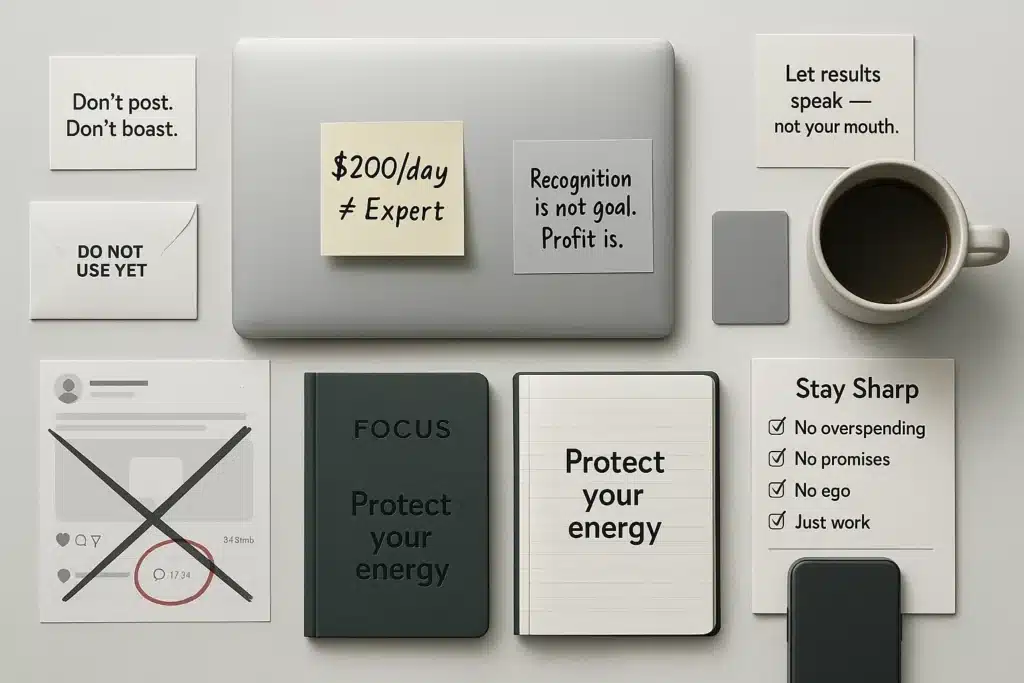
Don’t Let Profits Make You Complacent
Two affiliates, same earnings: $200 per day after a few weeks of running campaigns.
But their lives — and outcomes — go in completely different directions.
Affiliate A decides it’s time to “upgrade.”
New phone. Expensive apartment. Private office. Fancy weekends.
His monthly expenses triple overnight.
Affiliate B keeps everything the same.
Same old room. Spends only a third of his profits. Doesn’t scale too early. Doesn’t spend to impress.
A few weeks later, the campaign starts to dip.
Traffic weakens. Ads lose effectiveness. Competitors rise. Ad accounts run into issues.
Suddenly, both affiliates are back to $0/day.
Affiliate A hits a wall.
No more budget to test new campaigns.
Living costs pile up.
Stress builds — and eventually, he quits.
Affiliate B?
Still has cash reserves.
He runs new tests, updates creatives, shifts angles.
Eventually, he launches a profitable campaign again — this time with more experience and resilience.
Dig your well before you’re thirsty.
Always be ready for the unexpected.
Affiliate marketing is volatile.
Living expenses are not.
The moment you increase your lifestyle costs, you put a bomb under your cash flow.
So when your campaign starts making money, the question isn’t:
“What should I spend it on?”
It’s:
“How much can I keep so I can survive a worst-case scenario?”
Upgrade Your Gear — It’s an Investment, Not a Luxury
Affiliate marketing means long hours in front of a screen.
We’re talking 8–10 hours a day — juggling dozens of tabs, managing tracking tools, tweaking banners, analyzing numbers, designing landing pages…
So if you’re starting to make real money, the first upgrade you should consider is your gear.
I’m not talking about luxury setups.
You just need:
- A laptop powerful enough to handle heavy multitasking without freezing up
- A second monitor to speed up your workflow
- A comfortable chair — because you’ll need your focus intact after hour three
It’s strange how many people will spend $1,000 testing a campaign, but hesitate to drop $300 on a good monitor or a high-quality mouse.
Yet your gear is what you use every single day.
It directly impacts your performance — and your mental energy.
There’s no fixed formula.
But the rule of thumb is simple:
If it helps you work faster, think clearer, or stress less — it’s worth the money.
And it’s not just hardware.
You should also upgrade your software and tools:
- Move from shared hosting to a high-performance VPS
- Switch from free tools to paid ones that save you hours
- Invest in spy tools, conversion trackers, heatmaps — anything that helps you scale more efficiently
Affiliate marketing isn’t just about spending money on ads.
It’s about investing in the systems that keep you sharp and scalable.
That’s how you boost ROI — not just in your campaigns, but in how you work every day.
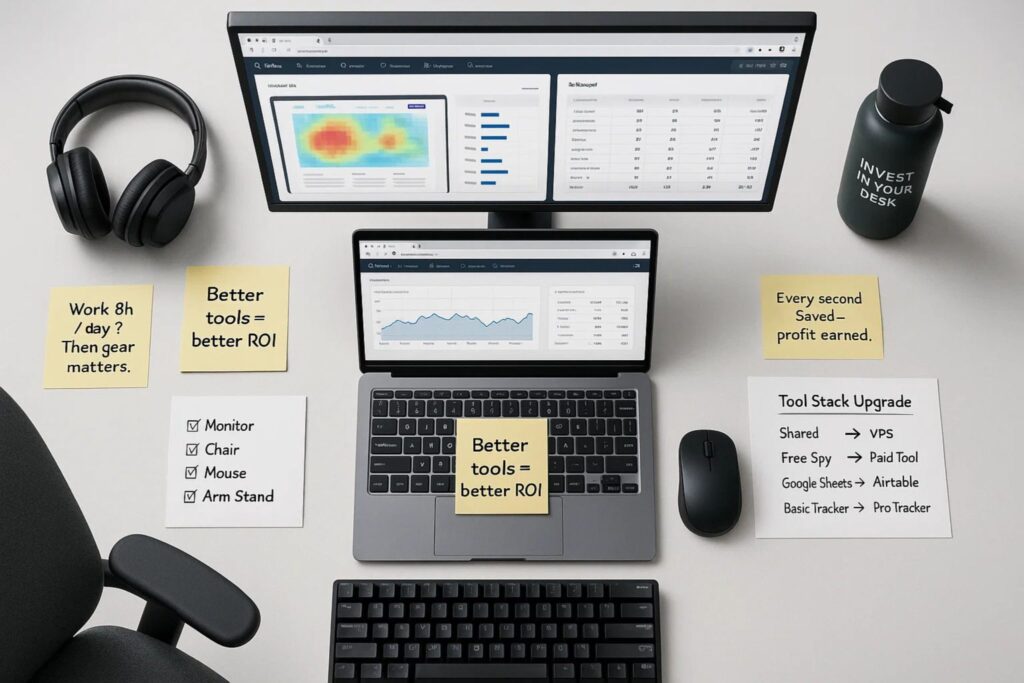
Hire Your First Virtual Assistant
Doing everything yourself isn’t wrong.
In fact, when you’re just starting out, you should do it all — to understand every moving piece, learn the workflow, and keep costs down.
But at some point, doing everything solo becomes a bottleneck.
Not because you’re not good enough — but because your time and energy are limited.
You can’t test ads, optimize landing pages, analyze reports, write copy, and answer emails — all in one day — without burning out or slowing down.
That’s when you need to start outsourcing.
You don’t need a full-time team.
Just start small: hire a virtual assistant (VA) for a few simple tasks per day — paid hourly or per task.
You’ll be surprised how many things don’t require your direct involvement, as long as you provide clear instructions.
Now, let’s be real:
- You might not find the right person on your first try
- You’ll spend time training them
- And yes, sometimes you’ll think: “I could’ve done this faster myself.”
But once you push through that initial phase, you unlock something powerful: Scalability.
Eventually, parts of your business can run on their own.
Even when you’re not actively working, the system keeps generating income.
Scale the Campaign That’s Already Working
Here’s a common mistake:
As soon as affiliates start seeing profits, they rush to launch a brand-new campaign.
The mindset goes like this:
- “I’ve already tested this niche. Let’s try something new.”
- “That offer over there has a higher payout — might be better.”
- “Other people are making money with mobile apps — maybe I should switch.”
So they abandon a profitable campaign…
To chase something “shinier.”
That’s the Shiny Object Syndrome — and it kills momentum.
Don’t fall into that trap.
A profitable campaign is a valuable asset.
Think about how much time, energy, and money you spent testing and optimizing to get it working.
So your first move shouldn’t be to pivot.
It should be to scale.
You can scale in two directions:
1. Horizontal Scaling
Use the same offer, but:
- Target a different country
- Run it on another traffic source (TikTok, Native Ads, GDN, etc.)
- Try a different traffic type (e.g., move from Google to Facebook or YouTube)
You’ve already built the core system — just change the context.
2. Vertical Scaling
- Gradually increase your budget (don’t 5x it overnight)
- Duplicate winning ad sets and segment audiences
- Improve your funnel — add upsells, backend offers
- A/B test new landing pages to improve conversion rate
Before jumping into a new campaign, ask yourself:
“Have I fully extracted the value from this one?”
If the answer is no, then don’t switch.
Double down. Scale what’s already working.

Build a Repeatable System for Affiliate Campaigns
There’s a story about a shoe factory owner whose entire production line burned to the ground. People thought he was finished.
But when asked how he felt, he simply said:
“I’ll rebuild tomorrow. The factory is gone, but I still have the process to build something even better.”
It sounds simple — but if you’ve done affiliate marketing long enough, you know how powerful that mindset is.
Many affiliates make money with a campaign…
But when that campaign dies, they can’t replicate the success.
Why?
Because there was no process.
No framework.
They ran on instinct. No documentation. No analysis. No lessons learned.
If you’re serious about affiliate marketing, you need to build your own system — something repeatable. Something scalable.
Start by asking:
- What are my criteria for choosing an offer?
- How do I create an angle — do I follow a structure or just go with gut feeling?
- What makes a landing page “optimized”? Do I use a checklist?
- When do I scale? Do I scale horizontally or vertically first?
- How do I track and organize test data? Do I compare it with past campaigns?
- What’s the exact step-by-step process for launching a new campaign?
All of that should be written down.
Not stored in your head.
Because when you’re tired, your thinking gets fuzzy.
And when you bring in help, they can’t read your mind.
A great system doesn’t have to be complicated.
But it should answer this one question clearly:
“If I had to start from scratch tomorrow, what would I do — step by step?”

Network Strategically — Find Allies, Not Just Info
When you’re new, learning from the community is essential.
But once you’re running profitable campaigns, your mindset needs to evolve. You’re no longer just looking for “teachers” — You need peers. You need allies.
Affiliate marketing is a quiet industry.
The best campaigns, the unusual offers, the scaling tricks — No one’s writing about them on blogs or sharing them on YouTube.
These insights only show up in private conversations:
Through DMs. Over coffee. In networks you build yourself.
Start small:
- Attend affiliate events if you can
- Connect with local affiliates for a casual meetup
- Reach out to people running the same offers — share insights
- Build relationships with advertisers, affiliate managers, and experienced media buyers
Some of the most profitable campaigns I’ve ever seen didn’t come from testing.
They came from conversations.
A single recommendation. A forgotten offer. A heads-up from someone in the game.

But here’s the rule:
Don’t just take — give first.
You don’t need to overshare or brag about your campaigns.
But don’t just leech value and disappear.
If you’re the kind of person who only ever asks, and never gives, no one will want to stay connected.
A simple principle:
Always offer value before asking for it.
Don’t DM someone just to pick their brain — especially if you have nothing to offer in return.
Some people message me and just ask, ask, ask.
It’s off-putting. It’s one-sided.
And to be honest, I don’t reply — not because I’m rude, but because I value my time.
I’ve already shared a ton of insights publicly on this blog.
I’m not here to waste time on empty conversations.
If you want to build meaningful connections, start by being valuable.
Scale Smart — Don’t Lose Your Discipline
One of the biggest mistakes I see in affiliate marketing?
People get complacent too early.
They hit a $200/day profit and start thinking they’re “ahead of the curve.”
They reach $1,000/day and suddenly believe they’re in a different league.
And then what happens?
They stop taking it seriously.
They stop testing new angles.
They stop digging into the data.
They get careless with ad accounts.
They let campaigns bleed for days, assuming they’ll bounce back.
Before they even realize it — they’re out of the game.
Affiliate marketing has no protected space for beginners.
And no “safe zone” for veterans.
You’re always competing — directly — with the best in the world.
If you’re running Facebook Ads, you’re up against:
- Million-dollar companies
- Agencies with 10 years of optimization experience
- Top-tier affiliate marketers
- And maybe… even me
So if you’re making $100/day, your next move isn’t to relax.
Your real goal is to build a system that makes $1,000/day — without you grinding for 12 hours a day.
That’s what real scaling looks like.
And here’s the truth:
No fire keeps burning without discipline.
Affiliate marketing gives you freedom —
But that means you need twice the discipline to stay sharp.
No one’s going to remind you to test new angles.
No one’s going to force you to review your data.
No one’s going to dock your pay if you slack off.
But the consequences?
They’re all yours to carry.
A $100/day campaign is just the beginning.
Keep building the system that generates profits — again and again and again.
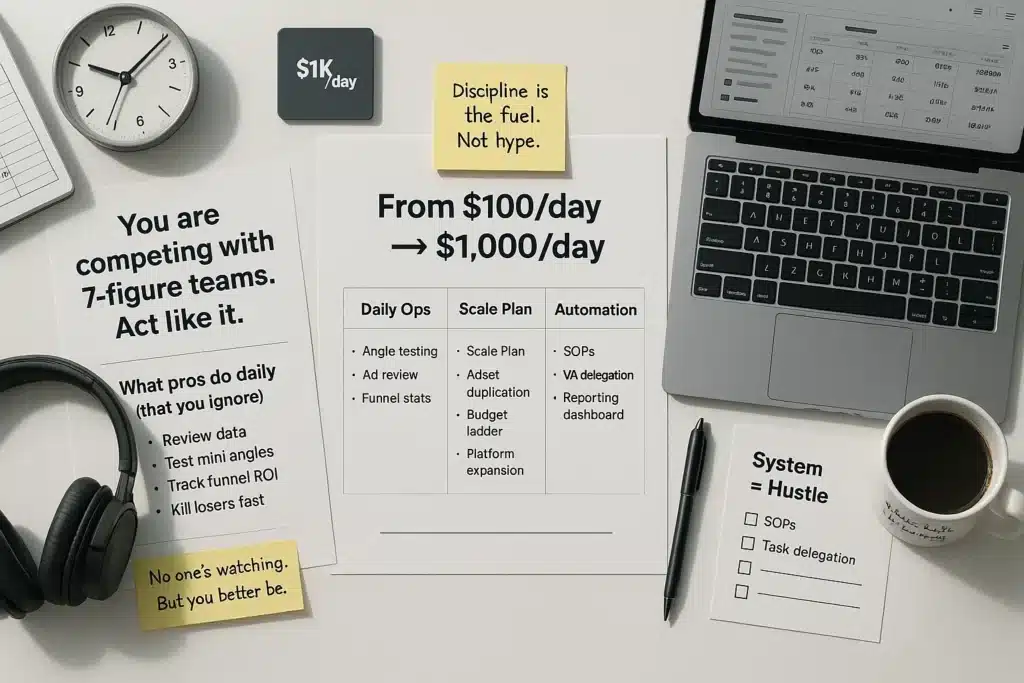
Know When to Stop — So You Can Go Further
Affiliate marketing can pull you in fast.
You start making money, and you want more.
You hit $100/day and wonder, “Why not $500?”
Then you see others flexing $2,000/day screenshots — and start chasing that.
Greed has no finish line.
So you push harder.
You launch more campaigns.
You never stop. No breaks. No reflection. Just forward, forward, forward.
In a normal job, you work 8 hours a day, 5 days a week.
As an affiliate, it turns into 14 hours a day, 7 days a week.
Eventually, you burn out.
Not because your campaigns failed —
But because you collapsed first.
A lot of talented marketers fail because they don’t know when to stop.
Sometimes, survival means knowing when to pause.
It’s how you stay in the game long-term.
If a campaign is bringing in $200/day, you don’t need to 5x it overnight.
Take 20–40% of the profits to reinvest.
Save the rest — as a buffer.
Earn a little less — but stay in the race.
Slow and steady is better than fast and broken.
Stopping at the right time doesn’t mean quitting.
It means checking the map.
Making sure you’re still going in the right direction.
Don’t run yourself into the ground.
Stay alive long enough to go further than everyone else.
Taking a step back doesn’t mean giving up.
It means checking the map — so you don’t lose your way.
You don’t need to sprint every day.
You just need to stay in the game long enough to outlast everyone else.
Play the long game.
Pace yourself.
And build something that lasts.


